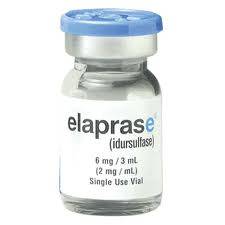Like most genetic disorders, Hunter Syndrome has no known cure at the present day.
Instead, treatments for Hunter Syndrome are palliative in nature, that is, they focus on treating symptoms and making life generally more bearable for the patient.
These can include
- The use of mechanical respirators to aid breathing and to prevent sleep apnea
- Surgically removing enlarged tonsils to clear the airway and make breathing easier
- Physiotherapy to maintain joint flexibility even as Glycosaminoglycans accumulate in the joints
- Installing a shunt to drain fluid buildup in the brain, which may be applying pressure to certain parts of the brain
- Replacing heart valves that no longer function properly
These treatments generally occur throughout the patients life as they do not address the root of the disorder, which is the body's inability to produce the enzyme iduronate-2-sulfatase.
Fortunately, new forms of treatment have been developed to combat this disease.
Enzyme replacement therapy is exactly what it sounds like, introducing a purified form of the iduronate-2-sulfatase enzyme into the body of a patient to increase the concentration of the enzyme in the body.
First undergoing clinical trials in 2006, idursulfase (under the trade name Elaprase) is now the main method of managing Hunter Syndrome.
Enzyme replacement therapy is not without it's downsides though.
One of the main problems with enzyme replacement therapy is that it's a very expensive drug,
Patients have to be injected with idursulfase once a week for the rest of their lives, and each little vial of the drug is already costly in itself.
Treating a single patient for a year is estimated to cost a whopping US$375,000 per year!
Since the drug is delivered through the bloodstream, this also means that the enzyme is also unable to reach certain parts of the body that are not well connected to the circulatory system or consist mainly of hard connective tissue.
In particular, the drug is unable to penetrate the blood-brain barrier to relieve symptoms in the brain, which means that enzyme replacement therapy is only marginally effective at reliving neurological symptoms associated with Hunter Syndrome.
First undergoing clinical trials in 2006, idursulfase (under the trade name Elaprase) is now the main method of managing Hunter Syndrome.
 |
| The purified I2S enzyme is injected into the patient to restore lost function |
Enzyme replacement therapy is not without it's downsides though.
One of the main problems with enzyme replacement therapy is that it's a very expensive drug,
Patients have to be injected with idursulfase once a week for the rest of their lives, and each little vial of the drug is already costly in itself.
Treating a single patient for a year is estimated to cost a whopping US$375,000 per year!
Since the drug is delivered through the bloodstream, this also means that the enzyme is also unable to reach certain parts of the body that are not well connected to the circulatory system or consist mainly of hard connective tissue.
In particular, the drug is unable to penetrate the blood-brain barrier to relieve symptoms in the brain, which means that enzyme replacement therapy is only marginally effective at reliving neurological symptoms associated with Hunter Syndrome.
What about the other methods of treating Hunter Syndrome though?
We'll talk more about that in the next post!
Next up: The future of Hunter Syndrome treatment
Sources:
http://hunterpatients.com/managing-hunter-syndrome/managing-symptoms/
http://www.mayoclinic.org/diseases-conditions/hunter-syndrome/basics/treatment/con-20026538
http://www.forbes.com/2010/02/19/expensive-drugs-cost-business-healthcare-rare-diseases.html
No comments:
Post a Comment